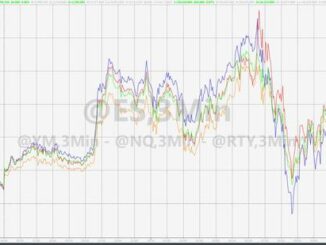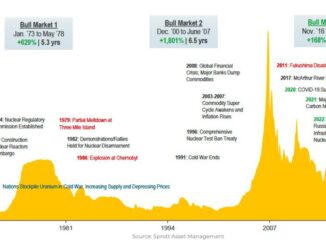
The Nasdaq rose to 12,264 on Monday, gaining 20% from its Dec. 28 low. By some measures, that places the index in a bull market. But can a single data point tell much about the stock market direction?
IBD relies on simple but time-tested study of the stock market based mainly on price and volume action and leading stocks. That and other indicators suggest that investors need to be cautious about their exposure to stocks right now.
The Follow-Through Day
The follow-through day is the first sign of a stock market returning to a bullish trend. It confirms a rally attempt off a market low when a major index rallies in higher volume. Not every follow-through results in a market uptrend. But at the same time, every market bottom has featured a follow-through day.
The most recent was March 29, and the main indexes have made minor progress since then.
A combination of higher highs in the indexes, many leaders breaking out and pushing higher, and broad participation from a majority of stocks shows a market truly turning from a bottom.
Nasdaq A/D Line Weak
The advance/decline lines do not show broad participation. The Nasdaq A/D line has been trending lower since February. The NYSE A/D line has been treading water during that time.
On Tuesday, MarketSmith data showed that the 10-day moving average of stocks making new lows is trending higher than the 10-day moving average of stocks making new highs on the Nasdaq. The same trend exists on the NYSE as well, though to a lesser extent.
Since March 1, stocks that have an EPS Rating of above 60 have also been flashing weak signals. Except for a few days, stocks on the Nasdaq and the NYSE that made new lows outnumbered those making new highs.
In another sign of disappointing market breadth, equal-weighted indexes are lagging. That shows that megacaps are carrying most of the index’s gains.
The First Trust Nasdaq 100 Equal Weight ETF (QQEW) is up about 10% year to date, while the Invesco QQQ Trust (QQQ) is up more than 20%. The Invesco S&P 500 Equal Weight ETF (RSP) has climbed 0.7%, way less than the SPDR S&P 500 ETF’s (SPY) 7.5% increase.
Leaders Lag On Nasdaq, NYSE
IBD’s outlook went into “uptrend under pressure” on April 25. A rise in distribution days was one reason for suggesting lower market exposure.
One reason for the change was that leading stocks continue to show weakness. The IBD 50 Index has made almost no progress since February. Most of its 8% year-to-date advance happened in January.
Read The Big Picture for a day-to-day analysis of stock market conditions, including these indicators.
Please follow VRamakrishnan on Twitter for more news on the stock market today.
YOU MAY ALSO LIKE:
Top Growth Stocks To Buy And Watch
Learn How To Time The Market With IBD’s ETF Market Strategy
Find The Best Long-Term Investments With IBD Long-Term Leaders
MarketSmith: Research, Charts, Data And Coaching All In One Place
The post Bull Market For The Nasdaq? These Worries Beg To Differ appeared first on Investor’s Business Daily.



